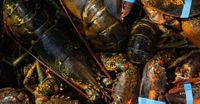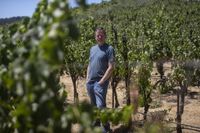On August 8, 2025, the U.S. wine industry found itself at the crossroads of international trade and domestic survival, as a flurry of tariff negotiations and new duties left producers, importers, and restaurateurs grappling with uncertainty. The White House confirmed that imports from Japan would be exempt from so-called tariff stacking—a move that echoed a similar arrangement with the European Union—but the fate of European wine tariffs remained a hotly debated topic in California and beyond.
The confirmation regarding Japanese imports followed a week of intense diplomatic back-and-forth. According to a White House official, as reported by multiple outlets, "as we finalize the deal, Japan will also be granted the exemption," indicating that the process for correcting President Donald Trump’s executive order on reciprocal duties was still underway. The order, signed just a week prior, had failed to accurately reflect the terms of a trade deal struck between Tokyo and Washington on July 22, 2025. Japan’s top tariff negotiator, Ryosei Akazawa, explained that the U.S. had acknowledged the error and promised to correct it, ensuring that Japanese goods wouldn’t be subject to additional tariffs on top of existing ones.
Under the revised agreement, the tariff rate for Japan was lowered to 15 percent, down from the 24 percent announced in April and the 25 percent threatened in July. The deal also slashed the U.S. tariff on Japanese car imports from 27.5 percent to 15 percent—a significant concession, considering the auto tariff had been a major sticking point. Akazawa noted that the U.S. had agreed to refund any excess duties collected due to the executive order error, with refunds dating back to August 7, 2025, when the higher tariffs took effect.
But while the U.S.-Japan deal was moving toward resolution, the situation for European wine—and by extension, California’s wine industry—remained far less settled. The European Union had secured its own deal with Washington, modeled on the Japan-U.S. agreement, which included a 15 percent tariff rate and a no stacking provision. Yet the specifics of which goods would be exempted, especially wine, were still being hammered out. For California winemakers, this ambiguity was more than just a technicality—it was an existential threat.
"It’s certainly hard to hear," said Natalie Collins, president of the California Association of Winegrape Growers, in a recent interview with CalMatters. She was referring to calls from some American winemakers and restaurateurs for President Trump to exclude wine from tariffs on European goods, arguing that European wines were vital to the health of the domestic wine ecosystem. Collins and others pointed out that European winemakers already benefit from generous subsidies, while California producers are left to shoulder the costs of tariffs on everything from imported corks and barrels to essential supplies. "It’s tough for California winemakers to price their products to compete with those from Europe," she added.
The stakes are enormous for California, which leads the nation in wine-related tourism and exports. According to WineAmerica, the state’s wine industry generated about $88 billion in economic impact in 2022, with $1.3 billion in exports that year, as reported by the California Department of Food and Agriculture. But the industry is facing headwinds: two years of declining wine consumption, new health studies warning against alcohol, and rising costs that eat into already thin margins.
Jason Haas, co-owner of Tablas Creek Vineyard in Paso Robles, painted a stark picture of the current climate. "We’ve seen two years in a row of declining wine consumption in the United States for the first time in two generations," Haas told CalMatters. "It shows up in less tourism, fewer people visiting wineries, fewer people ordering over e-commerce, less sales through wholesalers, both restaurant and retail." The pain, he said, is felt throughout the industry’s three-tier structure—producers, distributors, and retailers. With wine imports on hold due to tariff uncertainty, distributors have less revenue, and that trickles down to domestic producers.
Matt Licklider, proprietor of LIOCO in Healdsburg, described the ripple effect: "It has put distributors in a more conservative mindset, which doesn’t benefit anyone here." His winery sells to 40 distributors, some of whom have cut back orders due to doubts about future import revenue. For restaurants, which often mark up wine several times its wholesale price just to stay afloat, the uncertainty is especially destabilizing. Paul Einbund, owner of The Morris in San Francisco and Sirene in Oakland, said, "A lot of my diners just won’t drink domestic (wine)." The unpredictability, he added, is the worst part for small businesses that depend on buying products at the lowest possible prices. "People up and down the supply chain are in trouble," Einbund said. "We were getting emails saying pre-tariff pricing, but that’s dried up now. European producers are not selling to Americans right now. European buyers are not buying American wines right now."
Not everyone in California’s wine sector is clamoring for tariff relief, however. Richard Samra, a veteran grape grower in the Sacramento Delta and Lodi, argued that competition from subsidized European wines puts American producers at a disadvantage. "U.S. wine grape growers don’t have that," Samra said, referring to the billions in aid European vintners receive. The European Commission recently approved $5.6 billion to support French wine exports to the U.S., and the EU spends over 1 billion euros annually on promotion, with some countries offering additional subsidies. "We want to level the playing field. We have plenty of grapes and wine available for sale," Samra insisted. With tens of thousands of acres of vines being pulled out in California as supply outstrips demand, he sees imports as a major factor. "Profit margins for people are greater when they purchase a product from outside the U.S. and sell it here," he said.
Yet for vintners like Haas, the issue isn’t just about dollars and cents—it’s about relationships and reputation. Haas said his winery has lost all business in Canada this year, attributing the setback to the broader chill in trade relations triggered by tariffs. "There’s certainly spillover effects in terms of other countries just being less wanting to support American products, because they feel like they’re being bullied," Haas explained. While his exports account for only about 5 percent of production, Haas had invested heavily in building up export markets. "We did a lot of investment last year, and building up export markets," he said. "And so to have it be down this year instead of up has certainly been a hit to us."
As the U.S. government works to clarify its trade policies with both Japan and the European Union, the future of the wine industry hangs in the balance. The exemption from tariff stacking for Japan and the EU offers some hope for stability, but the ongoing negotiations over which goods—like wine—will be spared are leaving producers and importers in limbo. For California’s winemakers, the outcome will shape not just their bottom lines, but the very landscape of American wine for years to come.
In the world of wine, patience is a virtue. But with tariffs and trade tensions swirling, many are wondering just how long they can afford to wait.


